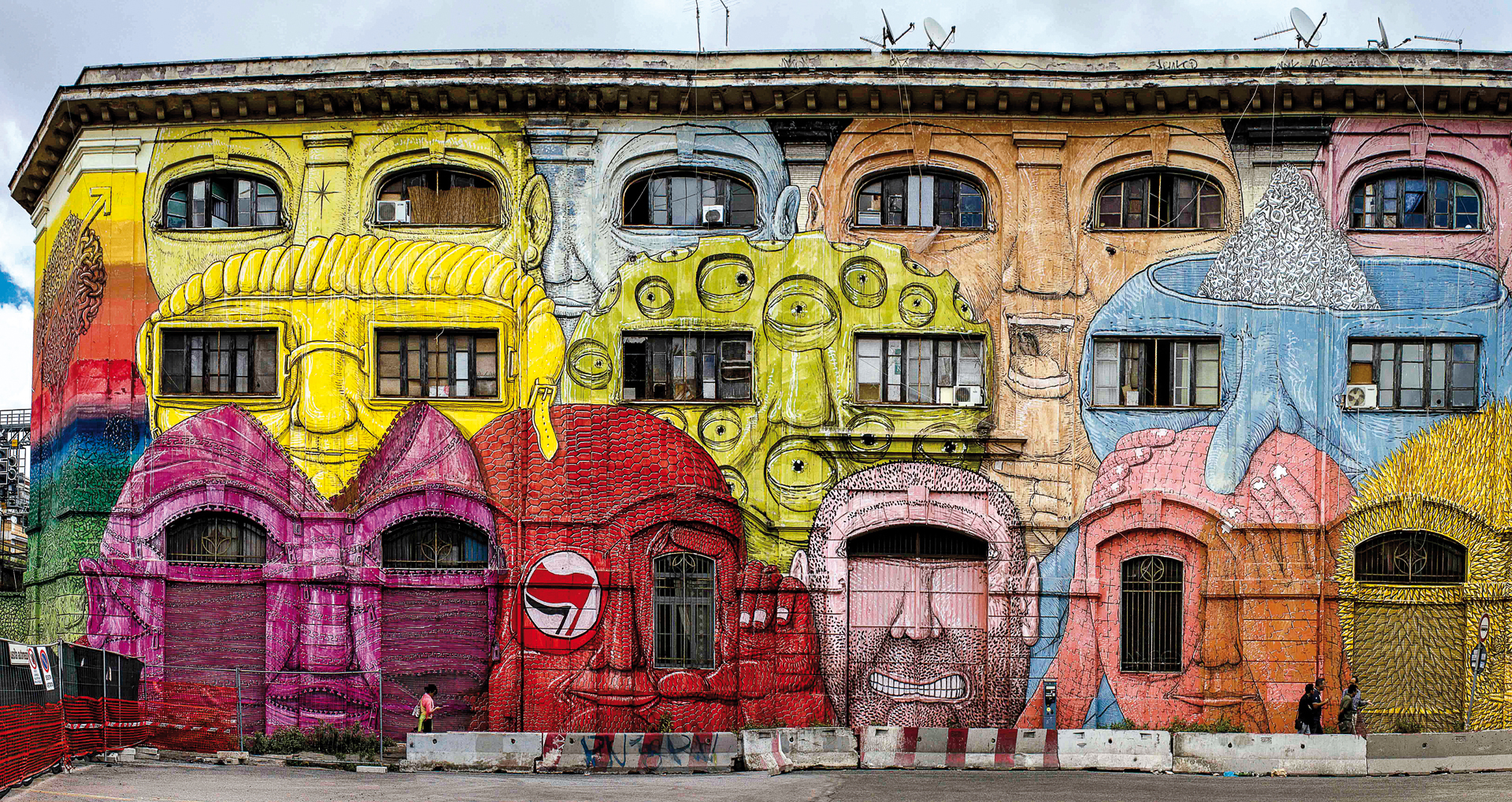A working-class neighbourhood, Testaccio is an open-air museum that embraces all eras.

Bounded by Via Marmorata, the Aurelian Walls and the Tiber, making it a distinctive and almost perfect rectangle on the map, Testaccio is one of Rome’s oldest and most beautiful areas.
The origins of the historic district
Its name derives from “Mons Testaceus”, the man-made mound created from layer upon layer of “cocci” (broken “amphorae”), widely used by the ancient Romans to transport and trade wine and oil in the Emporium (193 BC) near the port of Ripa Grande. This port and trading area saw the construction of several imposing public works, including a building to the rear, the “Porticus Aemilia”, which served as a warehouse where goods were stored.
Testaccio: walking between past and present
Starting our walk from here, in the heart of the neighbourhood, and heading along Via Marmorata towards Porta San Paolo, we reach the Pyramid of Cestius, built by the wealthy Caius Cestius Epulo in just 330 days sometime between 18 and 12 BC. In the shadow of the pyramid lies the Non-Catholic Cemetery, where you can pay your respects to many important poets and artists such as John Keats and Percy Bysshe Shelley. Not far from here, in a striking industrial building in Piazza Orazio Giustiniani, we find the Mattatoio which houses some of the city’s most interesting artistic events as well as a space entirely dedicated to the performing arts. A stone’s throw from here, Testaccio Market is a must-see, a lively and colourful foodie hub where you can sample superb “Roman” street food and do some shopping.
Testaccio underground
But Testaccio is also part of Rome’s “underground” scene, where colourful murals loom on buildings. In Via del Porto Fluviale, internationally renowned artists such as Blu and Axel Void have redeveloped the neighbourhood. You might not believe it, but Europe’s largest anti-smog mural is right here! This enormous painting of a heron was created by the artist Iena Cruz using a special eco-friendly paint. And don’t miss the “Wall of Fame” in Via dei Magazzini Generali, created by the artist JB Rock. Not far from Via dei Magazzini Generali, you can enjoy one of the most striking views of the Gazometro, the capital’s first power plant. The plant is now abandoned but has become part of the urban landscape as a symbol of industrial archaeology.
Rome’s ex-slaughterhouse
The architectural complex of the Mattatoio, designed in the late nineteenth century by the architect Gioacchino Ersoch then closed in 1975, underwent comprehensive redevelopment in the early 2000s. Today, the Mattatoio is an artistic and cultural research and production hub, in addition to hosting Roma Tre University’s Faculty of Architecture, the Academy of Fine Arts and the Città dell’Altra Economia (an anti-commercialist cultural venue).
